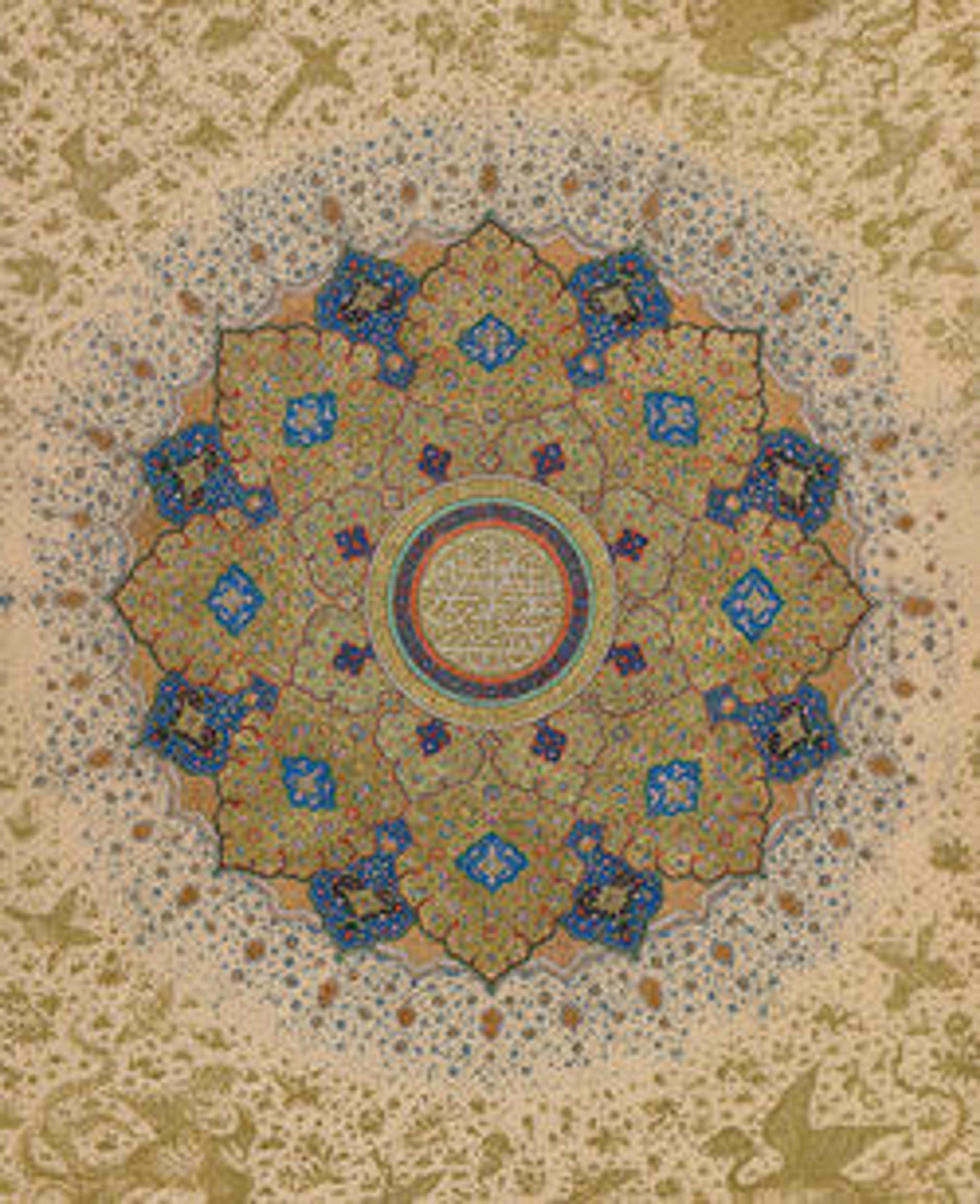Opening Folio of the 26th Volume of the "Anonymous Baghdad Qur'an"
This is the right half of a double‑page opening to a volume of the Qur'an. Its patron is unknown, but we know that the calligrapher was Ahmad ibn al‑Suhrawardi, a famous student of the master scribe Yaqut al‑Musta'simi, and that the illuminator was Muhammad ibn Aibak, who collaborated with him on several outstanding Qur'ans. From the surviving parts of this Qur'an, it appears that the illuminator created a different geometric scheme to preface each volume.
Artwork Details
- Title: Opening Folio of the 26th Volume of the "Anonymous Baghdad Qur'an"
- Calligrapher: Ahmad ibn al-Suhrawardi al-Bakri (died 1320/21)
- Illuminator: Muhammad ibn Aibak ibn 'Abdallah
- Date: 706 AH/1306–7 CE
- Geography: Made in Iraq, Baghdad
- Medium: Ink, opaque watercolor, and gold on paper
- Dimensions: Overall:
H. 17 in. (43.2 cm)
W. 13 7/8 in. (35.2 cm)
Mat:
H. 22 in. (55.9 cm)
W. 16 in. (40.6 cm)
Frame:
H. 23 in. (58.4 cm)
W. 17 in. (43.2 cm) - Classification: Codices
- Credit Line: Rogers Fund, 1950
- Object Number: 50.12
- Curatorial Department: Islamic Art
More Artwork
Research Resources
The Met provides unparalleled resources for research and welcomes an international community of students and scholars. The Met's Open Access API is where creators and researchers can connect to the The Met collection. Open Access data and public domain images are available for unrestricted commercial and noncommercial use without permission or fee.
To request images under copyright and other restrictions, please use this Image Request form.
Feedback
We continue to research and examine historical and cultural context for objects in The Met collection. If you have comments or questions about this object record, please contact us using the form below. The Museum looks forward to receiving your comments.
